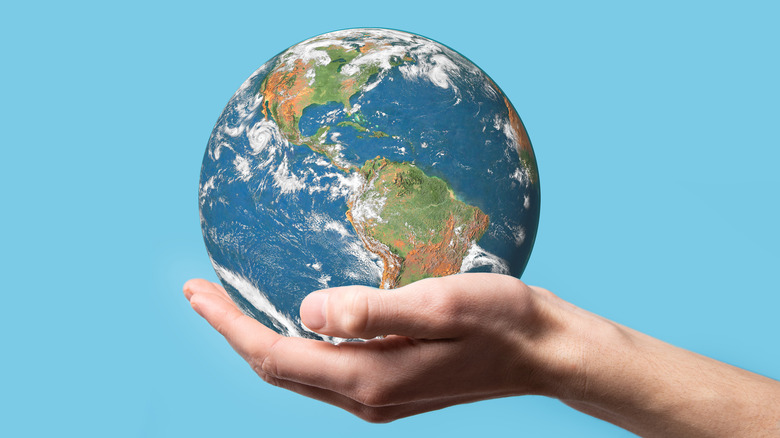New Study Finds That Hunger Continues To Affect More Women Than Men
You've heard of the wage gap (unfortunately), now get ready for another bit of outrageous news to hear in the year 2022: food insecurity is rampant, and it's also gendered. According to a new study by CARE International, hunger continues to affect more women than men.
CARE International is a non-government humanitarian organization and, according to its 2022 report, "women have less food than men in every region in the world." In 2021, 150 million more women than men went hungry — which marks a move in a scary direction, although not a new one. Four years ago in 2018, it said 18 million more women than men around the world experienced food insecurity. This new data demonstrates an 840% increase in the gendered hunger gap.
Peter Walton, CEO of CARE Australia, is concerned about what larger implications these warning signs might herald. "We know food prices are going up at home and abroad, we know there's a real risk of unprecedented famine, but what's rarely talked about is how unequally and unfairly this is experienced by women," Walton says, via Women's Agenda. "What's really concerning is that this is a reversal of progress — until recently the gap was shrinking. That's reflective of a reversal of gender equality gains more broadly."
Women are giving up food before men
According to the CARE report, when both men and women were faced with food insecurity, men tended to eat smaller meals, while women forewent a meal altogether. In developing countries, women who didn't receive financial support from a partner were more likely to experience malnutrition — Yemen, Sierra Leone, and Chad were the countries that demonstrated this issue the most. As the report warns, "Leaving women behind in crises and their solutions only gives space to new crises or to the worsening of the existent ones."
Walton says the Russia-Ukraine conflict, climate change, and the COVID-19 pandemic have substantially exacerbated the global food shortage, and inadvertently broadened the accompanying gender gap because women were more likely to lose their jobs and incomes due to being "overrepresented in insecure work, amongst other reasons" (via Women's Agenda). One Afghanistan woman cites the nearly-doubled price of food staples from inflation rates as a major catalyst for her own household's food insecurity. "Previously, one bag of flour was 1,700 to 1,800 Afghanis ($27-$28), but now it's 2,500 ($40)," she says, via Australian news outlet ABC. "People can't buy flour, rice, and oil. I'm poor too and I can't buy them."
Climate, war, and disease might contribute to hunger — but gender shouldn't
Regarding climate change, drought has ravaged Italy's Po River Valley and dried up crops around the world — in fact, last month, The European Commission officially lowered its estimated global wheat yield by 5 million tons, via Bloomberg. But, on the flip side, too much rain is starting to fall in places where it was once scarce, which poses an equally as severe imbalance. Vanuatu farmer Bule says newly heavy rainfall has affected her food supply because, as she explains, "the crops rot in the soil, and we have nothing to eat," (via ABC News).
But, climate, political conflict, and global disease epidemic aside, there's one factor to worldwide food insecurity that folks can change right away: their perception of other people. The sooner institutions are put in place that dismantle sociopolitical structures that have thus-far-perpetuated gender disparity around the world, the sooner progress can be made toward quelling hunger and gender inequality. As the CARE report warns, "The less gender inequality there is, the greater the food security."


